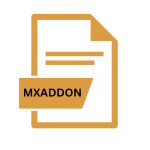.LRWEBENGINE File Extension

Adobe Lightroom Web Gallery File
| Developer | Adobe Systems |
| Popularity | |
| Category | Plugin Files |
| Format | .LRWEBENGINE |
| Cross Platform | Update Soon |
What is an LRWEBENGINE file?
The .LRWEBENGINE file extension is associated with Adobe Lightroom, a powerful software application designed for photographers to manage and edit their digital images.
Specifically, .LRWEBENGINE files are utilized for Lightroom Web Galleries, which enable users to create interactive and visually appealing online showcases of their photographs.
These galleries can be customized with various layouts, themes, and settings to suit the photographer’s preferences and branding.
More Information.
The history of the .LRWEBENGINE file extension is closely tied to the evolution of Adobe Lightroom itself.
Lightroom was initially released in 2007 as a standalone application, offering photographers a powerful solution for managing their digital assets and editing photos.
Over the years, Adobe has continuously updated Lightroom with new features and enhancements, including the ability to create web galleries.
The initial purpose of the .LRWEBENGINE file extension was to enable Lightroom users to export their edited photos and albums into a format suitable for web publishing.
By generating HTML-based galleries, users could easily share their work online with clients, colleagues, or the broader photography community.
Origin Of This File.
The .LRWEBENGINE file extension is a product of Adobe Systems, specifically designed for Lightroom.
It was introduced to provide users with a convenient means of exporting and sharing their image collections in the form of web galleries.
These galleries are HTML-based, allowing for easy viewing across various devices and web browsers.
File Structure Technical Specification.
The .LRWEBENGINE file is essentially a compressed archive that contains all the necessary files and resources for the web gallery.
This includes HTML, CSS, JavaScript, and image files, among others. The structure of the .LRWEBENGINE file is organized in such a way that it can be easily uploaded to a web server or shared via cloud storage services.
At its core, the .LRWEBENGINE file leverages standard web technologies to ensure compatibility and accessibility across different platforms and devices.
This means that viewers can access the web galleries created with Lightroom on desktop computers, tablets, and smartphones without any specialized software.
How to Convert the File?
Converting .LRWEBENGINE files to alternative formats or platforms may be desired for compatibility or customization purposes.
While direct conversion may not be feasible due to the proprietary nature of Lightroom’s web gallery format, alternative approaches exist:
- Export as JPEG or PNG: Within Lightroom, individual images from the web gallery can be exported as JPEG or PNG files, allowing for standalone presentation or integration into alternative web gallery platforms.
- Recreation: Recreating the web gallery using alternative web development tools or platforms provides an opportunity to achieve desired customization or compatibility goals.
Advantages And Disadvantages.
Advantages:
- Professional Presentation: Lightroom’s web galleries, powered by .LRWEBENGINE files, enable photographers to exhibit their portfolios in a polished and professional manner, enhancing their online presence.
- Ease of Use: With Lightroom’s intuitive interface, creating and customizing web galleries using .LRWEBENGINE files require minimal technical expertise, making them accessible to photographers of all skill levels.
- Customization: .LRWEBENGINE files afford photographers extensive customization options, allowing them to tailor the look and feel of their web galleries to align with their artistic vision or branding.
Disadvantages:
- Dependency on Lightroom: .LRWEBENGINE files are intrinsically tied to Adobe Lightroom, necessitating the software for creation, editing, and viewing. This dependency may present challenges for users seeking to share galleries with individuals who do not have access to Lightroom.
- Limited Interactivity: While .LRWEBENGINE-powered galleries offer visually appealing showcases of photographic work, they may lack the interactivity and dynamic features found in more advanced web development frameworks.
How to Open LRWEBENGINE?
Open In Windows
- Ensure Adobe Lightroom is installed on your Windows system. If not, download and install it from the Adobe website or via the Adobe Creative Cloud app.
- Double-click the .LRWEBENGINE file, or right-click and select “Open with…” then choose Adobe Lightroom from the list of programs.
- Adobe Lightroom will launch, and the .LRWEBENGINE file will be imported into the Web module for viewing and customization.
Open In Linux
- Adobe Lightroom is not officially supported on Linux. However, you may attempt to run it using compatibility layers such as Wine or through a virtual machine running Windows.
- Install Adobe Lightroom using your preferred method for running Windows applications on Linux.
- Once Lightroom is installed, follow the same steps as opening it in Windows.
Open In MAC
- Adobe Lightroom is available for macOS. If you don’t have it already, download and install it from the Adobe website or via the Adobe Creative Cloud app.
- Double-click the .LRWEBENGINE file, or right-click and select “Open with…” then choose Adobe Lightroom from the list of programs.
- Adobe Lightroom will launch, and the .LRWEBENGINE file will be imported into the Web module for viewing and customization.
Open In Android
- Adobe Lightroom is available for Android devices. Install it from the Google Play Store if you haven’t already.
- Transfer the .LRWEBENGINE file to your Android device.
- Open Adobe Lightroom on your Android device.
- Use the import function within the app to import the .LRWEBENGINE file.
- The file will be available for viewing and customization within the Lightroom app.
Open In IOS
- Adobe Lightroom is available for iOS devices. Install it from the App Store if you haven’t already.
- Transfer the .LRWEBENGINE file to your iOS device.
- Open Adobe Lightroom on your iOS device.
- Use the import function within the app to import the .LRWEBENGINE file.
- The file will be available for viewing and customization within the Lightroom app.













